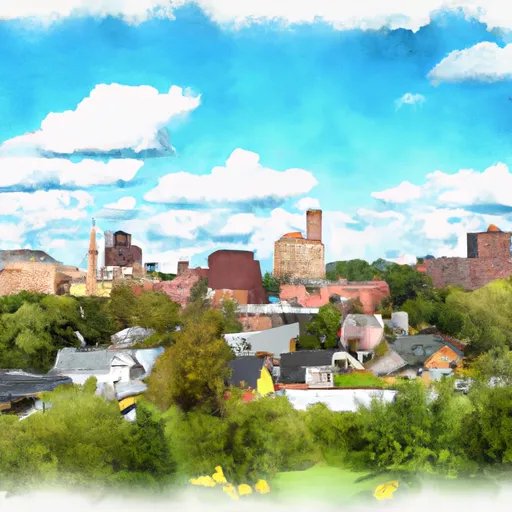-
 Snoflo Premium
Snoflo Premium
Get unlimited access to all our content
With no Ad interruptions! - Start Your Free Trial Login with existing account
Woodstock
Eden Index
Climate
6.3
•
Recreation
•
Community
•
Safeguard
2.5/10

Woodstock, Minnesota is a charming town located in the Midwest region of the United States. Known for its picturesque landscapes and welcoming community, Woodstock offers a diverse range of outdoor activities throughout the year.
The town experiences a typical Midwestern climate with four distinct seasons. Summers are warm and occasionally humid, perfect for outdoor recreation. Winters are cold and snowy, providing opportunities for winter sports like skiing and snowboarding. Spring and fall bring pleasant temperatures and vibrant foliage, making them ideal for hiking, biking, and exploring the natural beauty of the area.
Woodstock is blessed with an abundance of hydrology constituents. The town is home to several lakes, rivers, and streams, providing opportunities for fishing, boating, and kayaking. These water bodies also offer breathtaking views and serene picnic spots for relaxation and family outings.
Outdoor enthusiasts will find numerous recreational opportunities in Woodstock. The town boasts an extensive network of hiking and biking trails, allowing visitors to immerse themselves in nature while enjoying physical activities. Additionally, there are dedicated camping areas, golf courses, and parks perfect for leisurely walks or sports.
In summary, Woodstock, Minnesota offers a pleasant climate with distinct seasons, abundant hydrology constituents, and a variety of outdoor recreation opportunities. Whether one seeks adventure, relaxation, or natural beauty, this town has something for everyone to enjoy.
What is the Eden Index?
The Snoflo Eden Index serves as a comprehensive rating system for regions, evaluating their desirability through a holistic assessment of climate health, outdoor recreation opportunities, and natural disaster risk, acknowledging the profound impact of these factors on livability and well-being.
Climate Health Indicator (CHI): 6.3
Woodstock receives approximately
710mm of rain per year,
with humidity levels near 82%
and air temperatures averaging around
7°C.
Woodstock has a plant hardyness factor of
4, meaning
plants and agriculture in this region thrive during a short period during spring and early summer. Most
plants will die off during the colder winter months.
By considering the ideal temperature range, reliable water supplies, clean air, and stable seasonal rain or snowpacks, the Climate Health Indicator (CHI) underscores the significance of a healthy climate as the foundation for quality living.
A healthy climate is paramount for ensuring a high quality of life and livability in a region, fostering both physical well-being and environmental harmony. This can be characterized by ideal temperatures, reliable access to water supplies, clean air, and consistent seasonal rain or snowpacks.
Weather Forecast
Streamflow Conditions
Big Sioux
Area Rivers
Big Sioux
Snowpack Depths
Big Sioux
Reservoir Storage Capacity
Big Sioux
Groundwater Levels
Recreational Opportunity Index (ROI):
The Recreational Opportunity Index (ROI) recognizes the value of outdoor recreational options, such as parks, hiking trails, camping sites, and fishing spots, while acknowledging that climate plays a pivotal role in ensuring the comfort and consistency of these experiences.
Access to outdoor recreational opportunities, encompassing activities such as parks, hiking, camping, and fishing, is crucial for overall well-being, and the climate plays a pivotal role in enabling and enhancing these experiences, ensuring that individuals can engage in nature-based activities comfortably and consistently.
Camping Areas
| Campground | Campsites | Reservations | Toilets | Showers | Elevation |
|---|---|---|---|---|---|
| Tipsinah Mounds City Park | 75 | 1,170 ft |
Catastrophe Safeguard Index (CSI):
The Catastrophe Safeguard Index (CSI) recognizes that natural disaster risk, encompassing floods, fires, hurricanes, and tornadoes, can drastically affect safety and the overall appeal of an area.
The level of natural disaster risk in a region significantly affects safety and the overall livability, with climate change amplifying these risks by potentially increasing the frequency and intensity of events like floods, fires, hurricanes, and tornadoes, thereby posing substantial challenges to community resilience and well-being.
Community Resilience Indicator (CRI):
The Community Resilience Indicator (CRI) recognizes that education, healthcare, and socioeconomics are crucial to the well-being of a region. The CRI acknowledges the profound impact of these elements on residents' overall quality of life. By evaluating educational resources, healthcare accessibility, and economic inclusivity, the index captures the essential aspects that contribute to a thriving community, fostering resident satisfaction, equity, and social cohesion.

